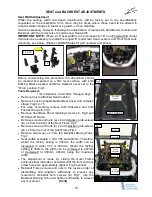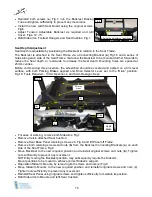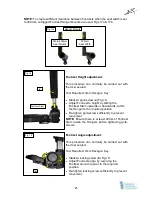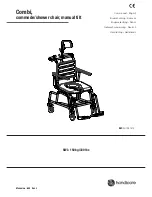
Rehabilitation Manufacturing Services Limited would like to thank you for your
confidence in choosing an Invicta Powered Wheelchair. We hope you will enjoy
driving your new wheelchair and that it gives you many years of pleasurable
service.
The details contained in this manual, are intended to offer the User and Carer/
Attendants, sufficient information and instruction to enable the Invicta IPC-S and
IPC-T model wheelchairs to be used in a practical, supportive and safe way.
Following these instructions carefully, is an essential part of ensuring that this
electrically powered device is used correctly and safely.
Time should be taken to thoroughly read all sections of the manual and the User
should be given the necessary assistance and training to ensure that they are
totally familiar with the operational capabilities of the Invicta P17 wheelchair.
To assist the reader, pictorial examples accompany the text wherever possible.
In most cases, the name Rehabilitation Manufacturing Services Limited, will be
referred to in this manual as RMS Ltd.
Invicta IPC-S and IPC-T wheelchairs are intended for indoor use, with limited
outdoor use and is therefore classified as (Class B according to BS EN 12184).
They are intended for use by children and young adults who are unable to walk,
or have a walking impediment cased by paralysis, loss of limbs, limb defect/
deformity or joint contractures/joint damage.
Appropriate training of Users and Carers by suitably qualified personnel, is
essential to ensure correct and safe operation of the wheelchair.
Invicta IPC-S and IPC-T models must only be used in conjunction with approved
accessories, manufactured or supplied by RMS Ltd.
RMS Ltd. will accept no liability for personal injury, or damage to property,
where non-approved products have been used in association with any Invicta
wheelchair.
FORWARD
INTENDED USE
APPLICATION
The versatile Invicta IPC-S and IPC-T wheelchairs, have been designed specifically
for younger users with a range of disabilities. However, consideration must always
be given to certain aspects of powered wheelchair use, to ensure correct and safe
operation.
The user’s age, their physical and psychological capabilities and their physical
weight, i.e. Max.100Kg where no vehicular transportation is required, or 50Kg
where the occupant is to be transported in their wheelchair, in a suitably adapted
motor vehicle.
The use of a powered wheelchair is not recommended for persons with
strong balance disorders, severe limitations in cognitive abilities or reduced
or inadequate eyesight
The environment where the wheelchair is to be used also plays a large part in the
safe use of the wheelchair, serious consideration must be given to aspects such as
transferring to and from the wheelchair, general wheelchair access and facilities
within the home and school.
A suitably trained Carer may also take over driving control of the wheelchair, by
means of an optional attendant controller which can be mounted at the rear of the
wheelchair. (Part number IPC-4-01 price on application).
6
Summary of Contents for IPC-S
Page 1: ...Powered Wheelchairs Instructions for Use Models IPC S and IPC T Edition Two Feb 2013...
Page 2: ...2...
Page 41: ...41 USER NOTES...
Page 42: ...USER NOTES...
Page 43: ...USER NOTES...







































